Lake Victoria heavily polluted by deadly metals
Water samples collected from three separate locations around the lake show it contains high levels of lead, arsenic, aluminum, and phosphorus, which are not good for human life when consumed in certain quantities.
POLLUTION LAKE VICTORIA
Lake Victoria has been heavily polluted with high traces of three dangerous minerals, a new study has revealed.
The study, conducted by researchers from the Texas Southern University in Houston, Texas in the US and Makerere University, has frightening revelations about the lake's future.
Assessing the Landscape
Ecological Changes of Murchison Bay, Lake Victoria Using Satellite Imagery study relied on analysis of water samples and satellite data to track changes.
Partial findings of the study presented at an international research conference in the US recently indicate that the lake has been significantly degraded by pollution and encroachment.
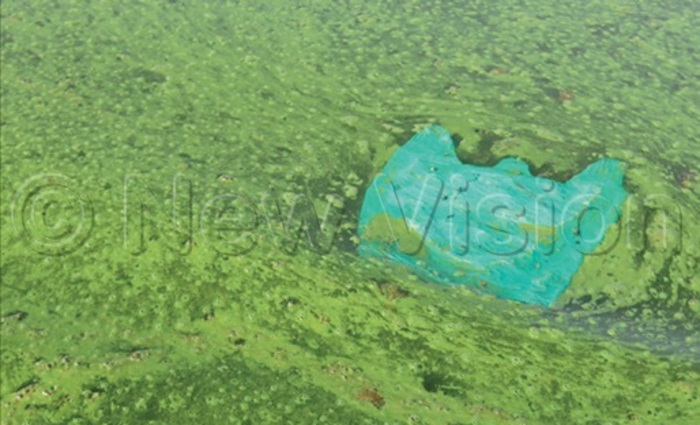
Green water in the lake resulting from algae growth
Water samples collected from three separate locations around the lake show it contains high levels of lead, arsenic, aluminum, and phosphorus, which are not good for human life when consumed in certain quantities.
According to the study, high nutrient and metal concentrations were recorded from samples obtained from Miami, Ggaba and Mulungo beaches as well as Murchison Bay.
The lake area around Mulungo beach has high levels of arsenic, while Miami and Ggaba beaches have high concentrations of phosphorus compounds, researchers discovered.
They also found that phosphorus levels in water at Miami and Ggaba beaches were above the recommended maximum levels for surface water and above acceptable levels for drinking water.
"The water quality in Murchison Bay of Lake Victoria, the largest freshwater lake in Africa, is on the decline due to rapid urban growth, increase in impervious surface and decline in vegetative cover, resulting in eutrophication of lakes and streams," an excerpt from the study says.
Dr. Anthony Gidudu, a lecturer at Makerere University's department of geomatics and land management, one of two authors of the study, told New Vision that the study was still ongoing.
Lake Victoria covers a surface area of about 68,800 sq.km shared by Uganda (45%), Tanzania (49%) and Kenya (6%).
The lake is home to more than 400 species of fish, and it remains a major source of livelihood for over 40 million people who live around it.
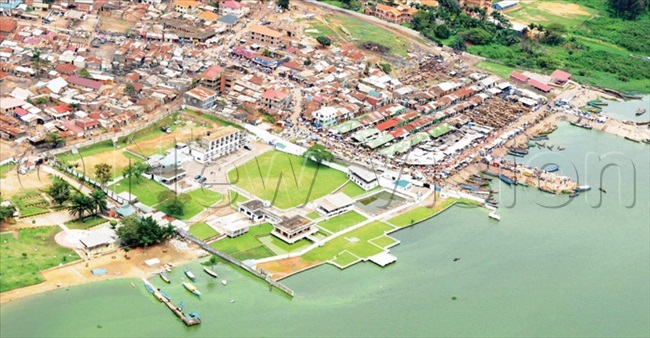
Dangerous chemicals
The presence of high levels of the four minerals in the lake is a potent threat to both livelihoods and human life, according to health experts.
"Arsenic and lead belong to a class of heavy metals. They are extremely poisonous to human beings," Prof Celestino
Obua, a physician and pharmacologist, explains.
Long-term exposure to high levels of arsenic is associated with cancer of the skin, bladder, and lungs, as well as heart disease, according to the US Food and Drug Administration.
Obua says exposure to lead can poison blood and affect the functioning of the kidney among adults, while young children can suffer damage to the nervous system, especially the brain.
Although phosphorus is an important nutrient for the human body since it helps build bones, excess quantities of the mineral can be harmful to organs and soft tissue, he explains.
Obua suspects that the high concentration of the heavy metals in the lake could be a result of deliberate action or unintentional discharge resulting from industrial activity.
"Those minerals do not usually occur in large quantities unless they have been mined. For you to get large concentrations in water, somebody must be discharging them into the lake," he says.
Murchison Bay, south of Kampala, is surrounded by the greater Kampala metropolitan area and a hub of industrial and commercial activities.
With a rising population around the lake, new hurdles have emerged, including waste management, wetland degradation, overfishing and the spread of aquatic weed, past studies reveal.
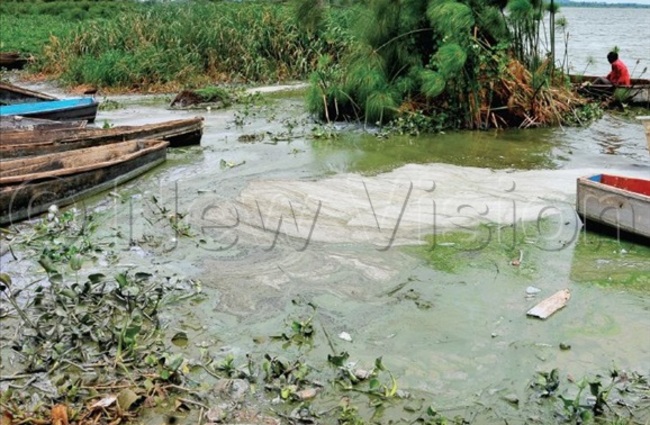
Severe degradation
Images from the earth-observing satellite further highlight significant degradation around the lake, which the researchers attribute to natural and human-induced disturbances, the new study shows.
Researchers processed and analysed Landsat satellite imagery, sampled (1995- 2019), to examine land cover changes around Murchison Bay.
The findings show that the vegetative cover around the lake decreased by 12% while the growth of organisms that limit the flow of water, including harmful algae, has increased by 119%.
The land cover change analysis revealed that the vegetative surface decreased by 4.2 % and the impervious surface increased by 21.9 % in the watershed areas.
According to the findings, chlorophyll concentration in the Murchison Bay increased significantly and covered most of the bay over the period.
Pollutant loading into streams of Murchison Bay has increased greatly due to population growth, wetland encroachment, economic growth and industrialisation in Kampala, the researchers observe.
The researchers propose conservation of the wetland areas, developing and preserving the vegetative buffer strips around the drainage stream and enforcing planned urban growth.
They also propose strict controls on pollution to prevent the decline in the water quality of Murchison Bay and to reduce the risk of harmful algae blooms and floating aquatic weeds.
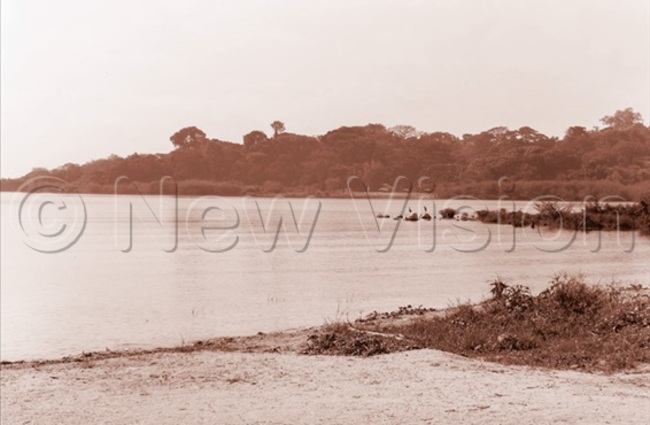
Govt agencies speak out
The National Water and Sewerage Corporation (NWSC) said it was aware of the deteriorating water quality in Lake Victoria due to the different human activities.
However, the agency said routine tests by the Directorate of Water Resources Management, the Uganda National Bureau of Standards (UNBS) and Chemiphar Lab, show that the water is safe.
"In general, our regular test results, as well as those from the independent labs of the mentioned institutions, are consistent and show that aluminum, lead, and arsenic are below detection levels," the NWSC senior public relations manager, Samuel Apedel, told New Vision.
"The water supplied by NWSC is safe, with levels well within the World Health Organisation (WHO) standards for potable water. The algae bloom is also a problem we are aware of, but our treatment systems can handle it sufficiently."
Apedel noted, however, that if the pollution of the lake is not controlled, the levels of the heavy metals and algae blooms will get worse and make it ‘very difficult and expensive' to treat water.
Tony Achidria, the NEMA senior public relations officer, says the agency needs more time to study the new research. He, however, acknowledges that encroachment on wetlands and unplanned developments have resulted in pollution of the lake.
Achidria says NEMA is working with local governments around the lake area to educate the people on sustainable use of resources.
"In 2019, we started an exercise to restore and demarcate the boundaries of the Lake Victoria catchment area. The exercise started with the demarcation of the south Busoga shores of the lake in Mayuge district, where we erected mark stones 200 metres away from the shores; and we have so far covered 48 villages along the shores of the lake," he stated.
In 2013, Vision Group spearheaded the Save Lake Victoria campaign, following disturbing evidence that the lake was under threat resulting from increased human activity and pollution.
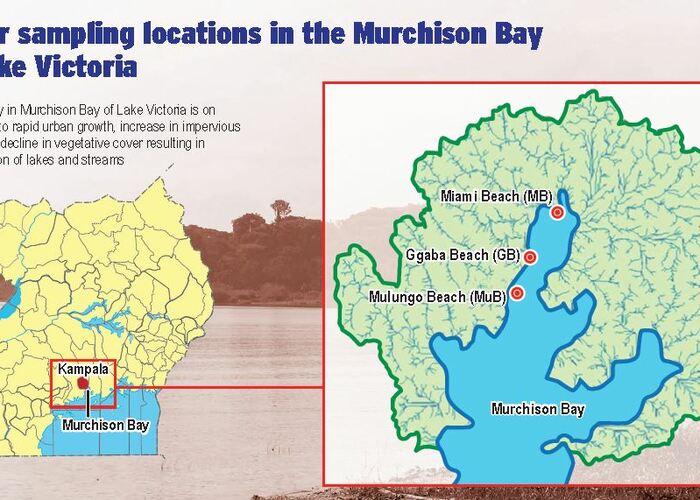
Lake drying up
In November last year, a separate study published in the Earth and Planetary Science Letters journal predicts that Lake Victoria could dry up more quickly in the coming decades.
A new study, Rapid Pleistocene desiccation and the future of Africa's Lake Victoria show that gradual changes in climate could lead to a drop in the lake's water levels.
Using a water budget model to examine changes in rainfall and temperature around the lake, the researchers predict that the White Nile could dry up within years.
The projections reveal that Kenya could lose access to the lake in less than 400 years while the economy of the entire East African community which depends on the lake will be affected.